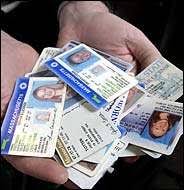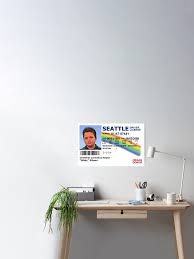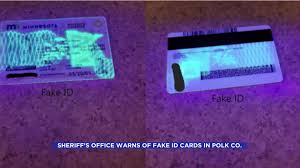target audience for fake IDs
Outline:
Introduction
- Definition of fake IDs
- Brief history of fake IDs and their significance
- The evolution of fake ID demand in modern society
Understanding the Target Audience for Fake IDs
- Who is buying fake IDs?
- Motivations behind purchasing fake IDs
- Age restrictions (alcohol, nightclubs, tobacco, etc.)
- Travel restrictions
- Online identity concealment
- Demographics: Age, gender, and geographic trends
- Social and psychological factors driving demand
The Market Landscape of Fake IDs
- Overview of the global fake ID market
- Key regions for fake ID production and distribution
- Online marketplaces and dark web connections
- Common distribution methods (direct-to-consumer, third-party resellers)
- Technological advancements in ID production (holograms, magnetic stripes, etc.)
Features and Quality of Fake IDs
- Essential features of a convincing fake ID
- Materials used in high-quality fake IDs
- Types of IDs available (driver's licenses, student IDs, passports, etc.)
- The importance of state-specific details
- Customization options available for fake IDs
- How technology improves the quality (UV light, holograms, RFID chips)
Risks and Consequences of Using Fake IDs
- Legal risks and penalties (fines, jail time, criminal records)
- The dangers of getting caught in different regions
- How governments and law enforcement are cracking down on fake ID use
- Social and academic consequences
- Economic impact on legitimate businesses
Analyzing the Target Audience's Behavior
- Key pain points and needs of the fake ID buyer
- Buying patterns and consumer behavior
- Research methods (online forums, peer influence)
- Customer preferences: Cheap vs. high-quality fake IDs
- Common scams and how to avoid them
Marketing Fake IDs: Challenges and Opportunities
- Ethical considerations in marketing fake IDs
- Understanding and navigating the legal landscape
- Tactics for targeting potential buyers (social media, referrals, hidden platforms)
- Creating trust through branding and customer reviews
- Challenges in reaching buyers while avoiding legal risks
- Competition among vendors in the market
Identifying Fake ID Red Flags
- Signs of poor-quality fake IDs
- Common mistakes in fake ID design and production
- How buyers can vet vendors for credibility
- The importance of customer support and refund policies
Case Studies: Real Stories of Fake ID Use
- Example of a successful fake ID purchase and use
- Case where a fake ID led to legal consequences
- Lessons learned from both experiences
Conclusion
- Summary of key points
- Final thoughts on the balance of risks and rewards in buying fake IDs
- Future trends in the fake ID market
Expanded Section: Understanding the Target Audience for Fake IDs
Fake IDs have long been associated with youth culture, often seen as a rite of passage for teenagers and college students. Understanding the specific target audience for fake IDs can provide key insights into why the demand continues to flourish and how vendors cater to this niche market. In this section, we’ll explore the various groups that typically seek out fake identification, their motivations, and the social context behind these behaviors.
Who Is Buying Fake IDs?
The majority of fake ID buyers are between the ages of 16 and 24, with a notable concentration of college students and high school seniors. Young adults who wish to engage in age-restricted activities, such as purchasing alcohol, attending nightclubs, or gambling, form the core demographic for this product. However, beyond this age group, there is a growing demand for fake IDs among travelers, expatriates, and even individuals seeking to protect their privacy or create alternative online identities.
In addition to age, geographic location plays a significant role in shaping the fake ID market. In regions where age restrictions are strictly enforced (such as the U.S. and parts of Europe), demand is higher. Conversely, in countries with more lenient regulations regarding alcohol consumption or club entry, the need for fake IDs tends to be lower. Similarly, cities with large college populations tend to see an uptick in fake ID purchases due to the social culture surrounding nightlife and drinking.
Motivations Behind Purchasing Fake IDs
There are several motivations driving individuals to seek out fake IDs. While the most common reason is to bypass legal age restrictions, other factors also come into play:
Age Restrictions for Alcohol and Clubs: In countries like the U.S., where the legal drinking age is 21, fake IDs are most often used by those underage wanting to purchase alcohol or gain entry into bars and clubs. This is the classic reason behind fake ID use, driven by peer pressure and the desire to partake in social activities reserved for older individuals.
Access to Age-Restricted Purchases (Tobacco, Cannabis): In regions where products like tobacco or cannabis are only legally available to adults, younger people use fake IDs to buy these items.
Travel Restrictions: Some individuals use fake IDs to travel under a different name or age, either to avoid penalties for overstaying visas, to hide their true identity while traveling, or to access restricted areas.
Concealing Online Identity: With the rise of online privacy concerns, some buyers use fake IDs to set up alternative online identities. This could be for innocent reasons, such as avoiding spam, or for more illicit purposes like signing up for restricted services or online platforms.
Demographics: Age, Gender, and Geographic Trends
Age: As mentioned, the primary age group for fake ID buyers ranges from 16 to 24 years old. High school and college students dominate this demographic, especially those in environments with strict age laws.
Gender: Statistically, men are more likely to purchase fake IDs than women, though the gender gap is narrowing as more women also seek to participate in nightlife or purchase restricted products.
Geographic Trends: Certain regions have a higher demand for fake IDs, particularly in countries where legal age limits for alcohol and other restricted items are high. For instance, the U.S. has a robust fake ID market due to its strict drinking age of 21, whereas in countries with lower age limits, the need for fake IDs decreases.
Social and Psychological Factors Driving Demand
The social context plays a huge role in the demand for fake IDs. In many cultures, socializing revolves around alcohol, clubs, and other adult-only venues. For younger people, these environments represent a taste of freedom, rebellion, and entry into adulthood. The desire to belong to a peer group or avoid exclusion from social activities often leads individuals to seek out fake identification.
Psychologically, using a fake ID can be thrilling. It represents a form of rebellion and risk-taking, behaviors that are common during adolescence and early adulthood. Many young people view it as a challenge, an opportunity to prove their maturity or cunning. Additionally, fake IDs provide a sense of control over one’s life circumstances—being able to sidestep restrictions imposed by society can feel empowering.
Expanded Section: Features and Quality of Fake IDs
The quality of fake IDs has dramatically improved in recent years, thanks to technological advancements and the increasing sophistication of ID forgery. Buyers today are looking for products that not only look authentic but also pass rigorous checks by law enforcement and businesses. In this section, we will explore the critical features that define a high-quality fake ID, the materials used, and how modern technology plays a role in ensuring these IDs are convincing.
Essential Features of a Convincing Fake ID
To successfully pass as a legitimate identification document, a fake ID must possess a variety of features that mimic the real thing. Some of the most essential features include:
Holograms: Authentic IDs often include holographic elements that change appearance depending on the angle of light. These can be difficult to replicate, but advanced vendors use high-quality printing techniques to reproduce convincing holograms.
Magnetic Stripes and Barcodes: Many modern IDs include magnetic stripes or scannable barcodes that store information electronically. A high-quality fake ID will incorporate these features and ensure they are functional, allowing the ID to be swiped or scanned like a legitimate card.
UV Light Detection: Real IDs often contain elements that are only visible under UV light. Fake IDs that replicate these features are more likely to pass inspection at clubs, bars, or during police checks.
Microprinting: Genuine IDs may contain microprinting, which consists of very small text or intricate designs that are hard to replicate with standard printing methods. This detail is a hallmark of higher-end fake IDs.
Material Quality: Real IDs are typically made from polycarbonate or other durable materials. Cheap fake IDs may be made from low-quality plastic that bends or fades easily, while higher-end fakes use similar materials to provide the same look and feel as a legitimate card.
Types of IDs Available
Fake ID vendors typically offer a variety of identification documents, including:
- Driver's Licenses: The most common type of fake ID, often customized to match the buyer’s home state or country.
- Student IDs: Used to access age-restricted benefits or for discounts on travel, events, and products.
- Passports: Far rarer but occasionally available, fake passports are used by individuals looking to evade travel restrictions or set up false identities.
 Utah driver's license
Utah driver's license
 customized fake IDs
customized fake IDs
 target audience for fake IDs
target audience for fake IDs
 counterfeit identification
counterfeit identification